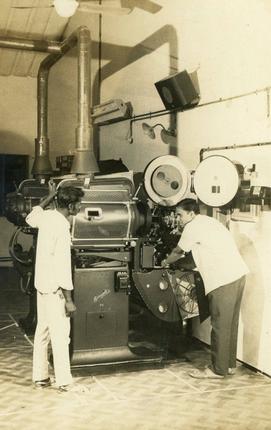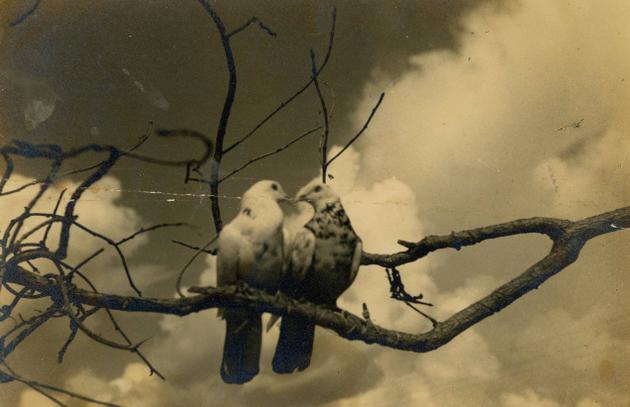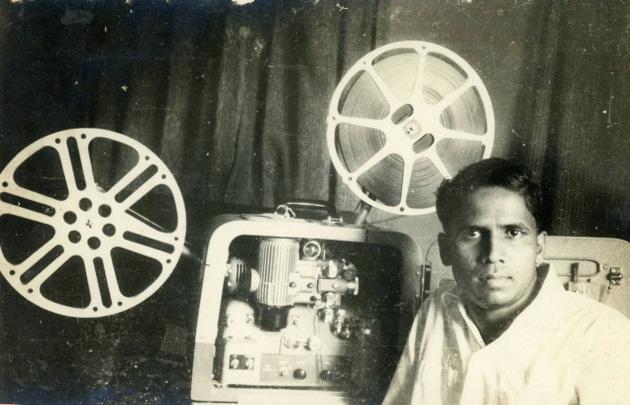
He trekked the seven hills of the Velliangiri Mountain and photographed the buttery sun at dawn with his prized Kodak box camera. “It cost just 52 rupees!” recalls S. A. Raju as he shows it off. “I captured the sunrise and sunset at the Singanallur tank, birds, and scenery in and around my area.” When he was studying at Sarvajana School, he would develop the negatives at Art Studios on V.H. Road, and send the photographs to the Illustrated Weekly of India in Mumbai. They paid Rs.100 for every good photograph.

S. A. Raju’s house in Singanallur retains the old world charm. Wooden pillars and a sturdy teakwood roof add to the aesthetics. It is from this very house that his journey into the world of filmmaking began. He has worked for 30 years in film studios in various capacities as the cinema projector operator, cameraman, and sound recordist. It was the immaculately dressed S.K. Kannan, a sound engineer at Pakshiraja Studio, who inspired Raju to join the studios. “He was my father’s friend and he earned a monthly salary of Rs. 900, a big amount then,” he remembers.
After his SSLC, Raju became an apprentice at the Pakshiraja Studio. By then, he was a licensed cinema projector operator too. “Pakshiraja Studio worked like clockwork and the shooting began at 9 a.m. By the end of the day, the film would be processed at the laboratory and the print shown to technical crew. I learnt everything about film processes, right from the time the roll was mounted till it rolled out as a motion film in the theatres,” he says. It was during the shooting of MalaiKallan that Raju became a projector operator. “I remember the scene. Actors Chakrapani (MGR’s brother) and Dorairaj were perched on a tree at Sungam. They had to spy on the Malaikallan with a binocular. As the actors had to leave for Chennai, dubbing had to be done on the same day. The projector operator didn’t turn up and I got the opportunity. Chakrapani put Rs. 100 in my pocket as a token of appreciation,” he recalls.

He learnt cinematography from Sailen Bose, a noted cinematographer from Kolkatta, who also worked in Malai Kallan. He recounts a complicated scene from the film. “A forest set was put up with mountains and trees. Actor Bhanumathi entered humming a song. She threw a mango up in the air, and Malaikallan (played by MGR) caught it. Those days we had the ‘boom man’ to place mikes and record the sounds. As the shadow of the mike fell on the screen, I climbed up in my veshti and operated the mike. MGR noticed the difficulty of my attire ”
During the tea break (sweet, kaaram and coffee was served free) MGR summoned the studio tailor and ordered two pants. Two khaki trousers were ready the next day and Raju started wearing pants from then on.
Besides MGR and Sivaji Ganesan, the reigning stars, other popular stars included Bhanumathi, and the Travancore sisters (introduced by S.M. Sriramulu Naidu in the Malayalam film Prasanna). “The actors shopped at Meeran & Co in Town Hall which sold gramophone and music discs.”
Raju’s acquaintance with the manager at the studio got him an opportunity to take inventory of various departments. “I helped him with typing official letters on a typewriter. As I took account of the different kinds of microphone (pressure, dynamic and ribbon), the mikes used for song recording, for dialogues, the different lenses such as 25 mm, 30 mm, 70 mm ( for close-up) and 100 mm ( for close-up of eyes), I learnt so much.”
The veteran then shares the story of Frank and Mary, a pair of tigers, which S.M. Sriramulu Naidu bought from the Madras Zoo for his film Swami Ayyappan. “Carpenters at the studio made two cages to transport the tigers. The cages were kept at the car shed for a month and later the tigers were tied outside in the open ground. In a few days, Frank became everyone’s pet. But he was scared of light, so we used a stuffed tiger to take long shots.”
Swami Ayyappan in Malayalam was a big success and the dubbed version in Tamil also ran to packed houses. “Local drama troupe members dubbed in Tamil for free,” he remembers.
Raju also mentions the flops such as Kalyaniyin Kanavan that starred Sivaji Ganesan and Saroja Devi. When Pakshiraja Studios wound up and moved to Bangalore it became Chamundeswari Studios, and Raju became its founding member .
He narrates the friendship MGR shared with Kalaignar Karunanidhi, M.N Nambiar, and Chinnappa Thevar. “Chinnappa Thevar was a milk vendor at Central Studios. He did maalish for MGR during his workout and struck up a friendship. Later, he became a junior artist and a popular film producer.”
(as told to S.A. Raju born in March 1932, studied at the Elementary School in Singanallur and later at Sarvajana. As a teenager he joined the Pakshiraja Studios and worked there till 1965. As a founding member of Chamundeswari Studios in Bangalore he worked there till 1980 and then moved back to Coimbatore. He was in-charge of a storage facility of picture and sound negatives of notable films, cameras and other studio equipment. Before retiring, he worked as cinema projector operator at Krishna and Raja theatres. His favourite films include Aryamala, Utthama Puthiren (where P.U. Chinnappa played a double role), Shantaram’s Jhanak Jhanak Paayal Baje, and Sivakavi and Haridas, with M.K. Thyagaraja Bhagavathar in the lead role.
I REMEMBER
The filming of the tiger and leopard fight scene in Malai Kallan. A huge pit was dug up inside the Paskhiraja Studio and Puli Govindarajan controlled the animals.
source: http://www.TheHindu.com / Home> Features> MetroPlus / by K. Jeshi / Coimbatore, April 02nd, 2013